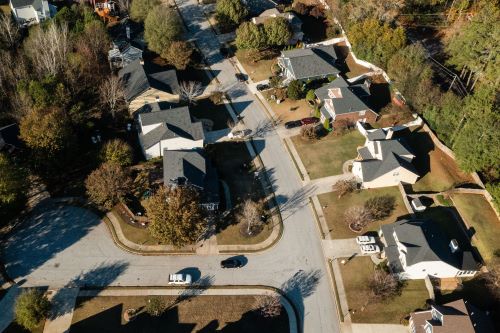Economy
Home transactions surged in January following a steep drop last year
In a noteworthy turnaround for the real estate sector, sales of pre-owned home exhibited a strong rebound in January, signaling a recovery following a significant downturn last year. The National Association of Realtors (NAR) released data indicating a substantial 3.1% increase in home transactions in January compared to the previous month. This surge reached an annual rate of 4 million—the highest since August.
Challenges in the Previous Year
This positive shift follows a challenging period in the housing market, with existing-home sales hitting their lowest point since 1995 in the previous year. Factors such as elevated mortgage rates and soaring home prices contributed to a cautious approach from both buyers and potential sellers.
“The housing market’s recent positive turn is a welcome change after challenges, marked by cautious transactions,” according to Wall Street Journal Subscription.
Driving Force: Decline in Mortgage Rates
A key driver behind the recent surge in home sales has been the decline in mortgage rates, down by approximately one percentage point since last fall. Despite home prices maintaining near-record highs, this trend has enticed buyers back into the market. According to Freddie Mac data, the average rate on a 30-year fixed mortgage, a crucial metric for homebuyers, fluctuated between 6.6% and 6.8% this year. This represents a decrease from the peak of 7.79% recorded in October.
Words of Caution
While the recovery is underway, Lawrence Yun, NAR’s chief economist, noted that people are capitalizing on the lower interest rates since October. However, recent weeks have seen a slight uptick in rates, potentially impacting future demand.
Inventory Challenges Persist
Despite the positive momentum, buyers are grappling with a challenging market characterized by limited inventory. Homeowners are hesitant to sell their homes due to their current low mortgage rates. This reluctance contributes to the scarcity of available homes and subsequent price increases in the housing market. In January, the national median existing-home price rose by 5.1% from the previous year, reaching $379,100, according to NAR.
Positive Signs for Buyers
Despite the hurdles, there are positive signs for buyers. New listings increased in January compared to a year ago, offering some relief. However, the typical time a home spent on the market also increased to 36 days in January, up from 33 days the previous year, according to NAR.
Shifting Dynamics
The housing market’s dynamics are further reflected in the shifting behavior of first-time buyers. They accounted for 28% of the market in January, down from 31% a year earlier. Additionally, 32% of January existing-home sales were purchased in cash, up from 29% in the same month a year ago.
Opportunities for Home Builders
As the market navigates these dynamics, home builders are finding opportunities amid the shortage of existing homes. The National Association of Home Builders reported a rise in U.S. home-builder confidence for the third consecutive month in February.
Complexities in the Outlook
While the recovery is evident, challenges remain, with mortgage rates staying higher than during the pandemic-induced housing boom. Furthermore, the housing starts measure, which indicates U.S. home-building activity, declined by 14.8% in January compared to the previous month. This information, reported by the Commerce Department, adds a layer of complexity to the overall market outlook.
“The recovery is apparent, yet challenges persist with elevated mortgage rates post-pandemic, impacting housing dynamics,” according to Barron’s.

